International Edition
OPTICS
FOURTH EDITION
Eugene Hecht
�
I OPTICS
Eugene Hecht
Adelphi University
San Francisco Boston New York
Capetown Hong Kong London Madrid Mexico City
Montreal Munich Paris Singapore Sydney Tokyo Toronto
�
Sponsoring Editor: Adam Black
Project Manager: Nancy Gee
Manufacturing Supervisor: Vivian McDougal
Cover Designer: Blakeley Kim
Production Service: HRS Interactive
Text Design: HRS Interactive
Composition: HRS Interactive
Illustration: HRS Interactive
Photo Research: Carolyn Eisen Hecht
ISBN 0-321-18878-0
If you purchased this book within the United States or Canada you should be
aware that it has been wrongfully imported without the approval of the Publisher
or the Author.
Copyright ?2002 Pearson Education, Inc., publishing as Addison Wesley, 1301
Sansome St., San Francisco, CA 94111. All rights reserved. Manufactured in the
United States of America. This publication is protected by Copyright and
permission should be obtained from the publisher prior to any prohibited reproduction,
storage in a retrieval system, or transmission in any form or by any means,
electronic, mechanical, photocopying, recording, or likewise. To obtain permission(s)
to use material from this work, please submit a written request to Pearson
Education, Inc., Permissions Department, 1900 E. Lake Ave., Glenview, IL 60025.
For information regarding permissions, call 847/486/2635.
Many of the designations used by manufacturers and sellers to distinguish their
products are claimed as trademarks. Where those designations appear in this
book, and the publisher was aware of a trademark claim, the designations have
been printed in initial caps or all caps.
123456789 10^MA-04 03 02 01
www. aw. com/physics
�
Prafiftt
To tdu, /. w. /
A*.s with previous revisions, this fourth edition has been
physics more readable. To further enhance the pedagogy, this
edition also contains many new drawings and photographs.
Chapter 2 (Wave Motion), which lays the mathematical
guided by three distinct imperatives: to fine-tune the groundwork for wave theory, has been somewhat revised in
order both to make the existing material clearer and to provide
pedagogy, modernize the discourse, and update the content.
During the past several years, using the third edition in the a broader foundation for what's to come. For instance, the
classroom, a number of small but significant pedagogical discussion of the differential wave equation (p. 13) has been
refinements have evolved, and these have been incorporated fleshed out a bit, with some of the previously missing steps
throughout this revised text. For instance, all symbols now provided.
representing vectors now have an arrow directly above them. The
intent, as ever, is to be responsive to students' needs.
Chapter 3 (Electromagnetic Theory, Photons, and Light)
has been extensively reworked. Nowadays many students
This edition continues the program of gradually studying Optics come to it with little more than the brief
modernizing the treatment. In this, there are several goals, vis-a-vis the exposure to electromagnetic theory afforded by the traditional
student: to impart an appreciation of the central role of atomic introductory course in physics. With them in mind, Section
scattering in almost every aspect of Optics; to provide an 3.1, Basic Laws of Electromagnetic Theory (p. 37), has been
understanding, as early as possible, of the insightful expanded, making the material far more accessible to these
perspective offered by Fourier Theory; and to make clear, from the students. In keeping with the commitment to discuss modern
outset, the underlying quantum-mechanical nature of light. applications of Optics, a new section called Optical Cooling
Technological advances have been made in a wide range of examines this important technique (p. 65).
The Propagation of Light (Chapter 4) now contains a
areas from lenses and lasers to telescopes and fiberoptics. This
fourth edition treats (even if sometimes only in introductory discussion of the historical origins of the concept of index of
fashion) many of the significant advances that today's students refraction (p. 88). This helps to make Snell's Law easier to
really understand. The chapter is further enhanced with a more
should be aware of.
At the request of users, I have added dozens of new thorough treatment of Fermat and Mirages (p. 107). A new
problems throughout the text. Most of these were designed to section, 4.11.2, called Photons and the Laws of Reflection and
develop needed analytic skills and are of the Refraction (p. 141) completes the chapter.
The treatment of Geometrical Optics (Chapter 5) was
"easy-to-intermediate" variety. As in previous editions, the complete
solutions to problems without asterisks can be found at the back of refined here and there (e.g., pp. 161, 164, 166, 178, and 215)
the book. It should be noted that the vast majority of the new to improve its clarity. The field of telecommunications is so
problems are not provided with such solutions. This was done important and so rapidly evolving that each edition of this
to increase the selection of potential homework questions. book has had to treat several major technological advances.
Much effort was expended in redrawing well over a Accordingly, the discussion of fiberoptics was brought up to
hundred pieces of existing art to make them clearer and the date with the consideration of such topics as erbium-doped
ill
�
iv Preface
fiber amplifiers (p. 197), wavelength division multiplexing, grand ideas. Thus the concept of interference, which is one of
and optical switching via MOEMS (p. 200). Liquid mirrors are the premier notions in Optics (and not surprisingly in
briefly considered on page 223. The chapter ends with a new Quantum Mechanics, as well), is used qualitatively to understand
propagation phenomena long before it's studied formally in
section on Gravitational Lensing (p. 231).
The discussion of wavefront aberrations in Chapter 6 {More Chapter 9. Among other benefits, this approach of presenting
on Geometrical Optics) has been enlarged (p. 254). There is a advanced concepts in simplified form early in the exposition
new piece concerning the upgraded Arecibo Observatory (p. allows the student to develop a cohesive perspective.
258) because it beautifully illustrates an important
contemporary approach to dealing with spherical aberration.
Over the years, I have received comments, articles, and
photographs, from hundreds of colleagues, and I most
Chapter 7 {The Superposition of Waves) was reworked to sincerely thank them all. I am especially grateful to Professors P. J.
make the material generally more accessible (e.g., p. 303). The Dolan of Northeastern Illinois University, W. A. Mendoza of
phasor representation was used to illuminate the creation of Jacksonville University, M. W. Coffey of the University of
both standing waves (p. 288) and partial standing waves (p. Colorado and H. Fearn of California State University for their
289). Because of a very significant series of experiments contributions and suggestions. Prof. J. R. Peverley of The
published in the last several years, the discussion of Group George Washington University kindly donated several very
Velocity (p. 296), Section 7.2.2, was enriched and new subsections nice problems on Jones matrices and I thank him for helping to
on Superluminal and Subluminal Light were added.
freshen up this edition. Anyone else wishing to contribute
In Chapter 8 {Polarization), as elsewhere, the prose was their favorite problems, please fell free to do so. Indeed, if you
tightened and the analysis clarified, here and there. A few new are interested in the discipline and wish to exchange ideas you
photographs and several fresh diagrams were included. The can contact me by mail at Adelphi University, Physics
section (8.7) on Retarders was extended, and the concepts of Department, Garden City, N.Y. 11530 or at genehecht@aol.com.
I'd like to thank the entire team at Addison Wesley, for all
zero-ordered, multiple-ordered, and compound zero-ordered
wave plates were introduced. A section on Liquid Crystals their help, without which this edition would never have seen
(8.12) was added, and the operation of both the liquid crystal the light of day, as it were. I am especially grateful to Adam
variable retarder and liquid crystal display (LCD) were Black whose enthusiasm for the project was sustaining, to
Joan Marsh whose wise decisions made the whole thing
explained.
In addition to a few new photos and the occasional manageable, and to Nancy Gee who handled the day-to-day
clarifying remark, Chapter 9 {Interference) now contains a section, operation with efficiency and good humor.
9.8.4, called Radar Interferometry.
The book was produced by HRS Interactive, which did a
Over the last two decades there's been some interesting brilliant job of getting it all together. Lorraine Burke watched
work done on so-called nondiffracting beams. Accordingly, over every aspect of the process with incredible patience and
Chapter 10 {Diffraction) contains a new section (10.2.7) skill; Alan Wiener and Jennifer Burke cheerfully brought their
entitled The Zeroth-Order Bessel Beam, that deals with the production acumen to bear; Ed Burke designed a beautiful
book and struggled mightily to maintain the highest standards;
phenomenon.
Chapters 11 {Fourier Optics), and 12 {Basics of Coherence Hilda Espreo was the tireless compositor; and as ever, Pat
Theory) have undergone a line-by-line fine tuning, but little or Hannagan, with the able assistance of Chris Burke, produced
no overhaul.
incomparable art. All have my deepest respect and profound
Chapter 13, Modern Optics: Lasers and Other Topics, has appreciation. Finally, I thank my dear friend, my wife,
been revised with the addition of a subsection on Gaussian Carolyn Eisen Hecht for coping with one more edition of one
Laserbeams and some updating as required (e.g., it now more book.
includes material on the Omega laser).
This fourth edition continues the agenda of unifying the
discourse, as much as possible, within the framework of a few Freeport, New York E.H.
�
1 A Brief History 1
1.1 Prolegomenon 1
1.2 In the Beginning 1
1.3 From the Seventeenth Century 2
1.4 The Nineteenth Century 4
1.5 Twentieth-Century Optics 7
2 Wave Motion 10
2.1 One-Dimensional Waves 10
2.2 Harmonic Waves 14
2.3 Phase and Phase Velocity 17
2.4 The Superposition Principle 20
2.5 The Complex Representation 21
23 2.6 Phasors and the Addition of Waves
2.7 Plane Waves 24
2.8 The Three-Dimensional Differential
Wave Equation 27
2.9 Spherical Waves 28
2.10 Cylindrical Waves 31
Problems 32
3 Electromagnetic Theory, Photons,
and Light 36
3.1 Basic Laws of Electromagnetic Theory 37
3.2 Electromagnetic Waves 44
3.3 Energy and Momentum 47
3.4 Radiation 58
3.5 Light in Bulk Matter 66
3.6 The Electromagnetic-Photon Spectrum 73
3.7 Quantum Field Theory 80
Problems 82
4 The Propagation of Light 86
4.1 Introduction 86
4.2 Rayleigh Scattering 86
4.3 Reflection 95
4.4 Refraction 100
4.5 Fermat's Principle 106
4.6 The Electromagnetic Approach 111
4.7 Total Internal Reflection 122
4.8 Optical Properties of Metals 127
4.9 Familiar Aspects of the Interaction of
Light and Matter 131
4.10 The Stokes Treatment of Reflection and
Refraction 136
4.11 Photons, Waves, and Probability 137
Problems 141
5 Geometrical Optics 149
5.1 Introductory Remarks 149
5.2 Lenses 150
5.3 Stops 171
5.4 Mirrors 175
5.5 Prisms 186
5.6 Fiberoptics 193
5.7 Optical Systems 201
5.8 Wavefront Shaping 226
5.9 Gravitational Lensing 231
Problems 234
6 More on Geometrical Optics 243
6.1 Thick Lenses and Lens Systems 243
6.2 Analytical Ray Tracing 246
6.3 Aberrations 253
6.4 GRIN Systems 273
6.5 Concluding Remarks 276
Problems 277
�
vi Contents
7 The Superposition of
Waves 281
7.1 The Addition of Waves of the Same
Frequency 282
7.2 The Addition of Waves of Different
Frequency 294
7.3 Anharmonic Periodic Waves 302
7.4 Nonperiodic Waves 308
Problems 320
8 Polarization 325
8.1 The Nature of Polarized Light 325
8.2 Polarizers 331
8.3 Dichroism 333
8.4 Birefringence 336
8.5 Scattering and Polarization 344
8.6 Polarization by Reflection 348
8.7 Retarders 352
8.8 Circular Polarizers 357
8.9 Polarization of Polychromatic Light 358
8.10 Optical Activity 360
8.11 Induced Optical Effects—Optical
Modulators 365
8.12 Liquid Crystals 370
8.13 A Mathematical Description of
Polarization 372
Problems 379
9 Interference 385
9.1 General Considerations 386
9.2 Conditions for Interference 390
9.3 Wavefront-splitting Interferometers 393
9.4 Amplitude-splitting Interferometers 400
9.5 Types and Localization of Interference
Fringes 414
9.6 Multiple-Beam Interference 416
9.7 Applications of Single and Multilayer
Films 425
9.8 Applications of Interferometry 431
Problems 438
10 Diffraction 443
10.1 Preliminary Considerations 443
10.2 Fraunhofer Diffraction 452
10.3 Fresnel Diffraction 485
10.4 Kirchhoff's Scalar Diffraction Theory 510
10.5 Boundary Diffraction Waves 512
Problems 514
11 Fourier Optics 519
11.1 Introduction 519
11.2 Fourier Transforms 519
11.3 Optical Applications 529
Problems 556
12 Basics of Coherence
Theory 560
12.1 Introduction 560
12.2 Visibility 562
12.3 The Mutual Coherence Function and the
Degree of Coherence 566
12.4 Coherence and Stellar Interferometry 573
Problems 578
13 Modern Optics: Lasers and
Other Topics 581
13.1 Lasers and Laserlight 581
13.2 Imagery — The Spatial Distribution of
Optical Information 606
13.3 Holography 623
13.4 Nonlinear Optics 639
Problems 644
Appendix 1 649
Appendix 2 652
Table 1 653
Solutions to Selected Problems 658
Bibliography 685
Index 689
�
(History
1.1 Prolegomenon
1.2 In the Beginning
immersed in water (p. 102) is mentioned in Plato's Republic.
Refraction was studied by Cleomedes (50 a.d.) and later by
In chapters to come we will evolve a formal treatment of Claudius Ptolemy (130 a.d.) of Alexandria, who tabulated
much of the science of Optics, with particular emphasis on fairly precise measurements of the angles of incidence and
aspects of contemporary interest. The subject embraces a vast refraction for several media (p. 101). It is clear from the
body of knowledge accumulated over roughly three thousand accounts of the historian Pliny (23-79 a.d.) that the Romans
years of the human scene. Before embarking on a study of the also possessed burning glasses. Several glass and crystal
modern view of things optical, let's briefly trace the road that spheres have been found among Roman ruins, and a planar
led us there, if for no other reason than to put it all in convex lens was recovered in Pompeii. The Roman
philosopher Seneca (3 b.c.e.-65 a.d.) pointed out that a glass globe
perspective.
filled with water could be used for magnifying purposes. And
it is certainly possible that some Roman artisans may have
used magnifying glasses to facilitate very fine detailed work.
After the fall of the Western Roman Empire (475 a.d.),
which roughly marks the start of the Dark Ages, little or no
The origins of optical technology date back to remote scientific progress was made in Europe for a great while. The
antiquity. Exodus 38:8 (ca. 1200 b.c.e.) recounts how Bezaleel, while dominance of the Greco-Roman-Christian culture in the lands
preparing the ark and tabernacle, recast "the looking-glasses embracing the Mediterranean soon gave way by conquest to
of the women" into a brass laver (a ceremonial basin). Early the rule of Allah. The center of scholarship shifted to the Arab
mirrors were made of polished copper, bronze, and later on of world, and Optics was studied and extended, especially by
speculum, a copper alloy rich in tin. Specimens have survived Alhazen (ca. 1000 a.d.). He elaborated on the Law of
from ancient Egypt—a mirror in perfect condition was Reflection, putting the angles of incidence and reflection in the same
unearthed along with some tools from the workers' quarters plane normal to the interface (p. 99); he studied spherical and
near the pyramid of Sesostris II (ca. 1900 b.c.e.) in the Nile parabolic mirrors and gave a detailed description of the human
valley. The Greek philosophers Pythagoras, Democritus, eye (p. 202).
Empedocles, Plato, Aristotle, and others developed several
By the latter part of the thirteenth century, Europe was only
theories of the nature of light. The rectilinear propagation of beginning to rouse from its intellectual stupor. Alhazen's work
light (p. 89) was known, as was the Law of Reflection (p. 97) was translated into Latin, and it had a great effect on the
enunciated by Euclid (300 b.c.e.) in his book Catoptrics. Hero writings of Robert Grosseteste (1175-1253), Bishop of Lincoln,
of Alexandria attempted to explain both these phenomena by and on the Polish mathematician Vitello (or Witelo), both of
asserting that light traverses the shortest allowed path between whom were influential in rekindling the study of Optics. Their
two points. The burning glass (a positive lens used to start works were known to the Franciscan Roger Bacon (1215—
fires) was alluded to by Aristophanes in his comic play The 1294), who is considered by many to be the first scientist in
Clouds (424 b.c.e.). The apparent bending of objects partly the modern sense. He seems to have initiated the idea of using
�
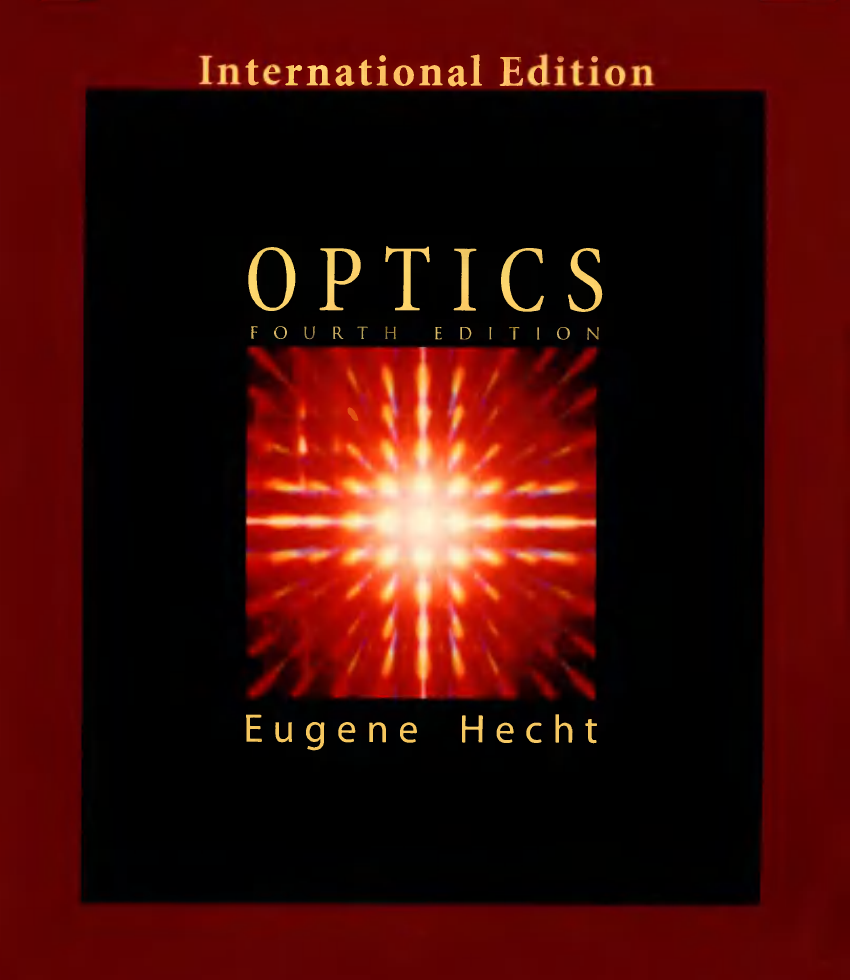
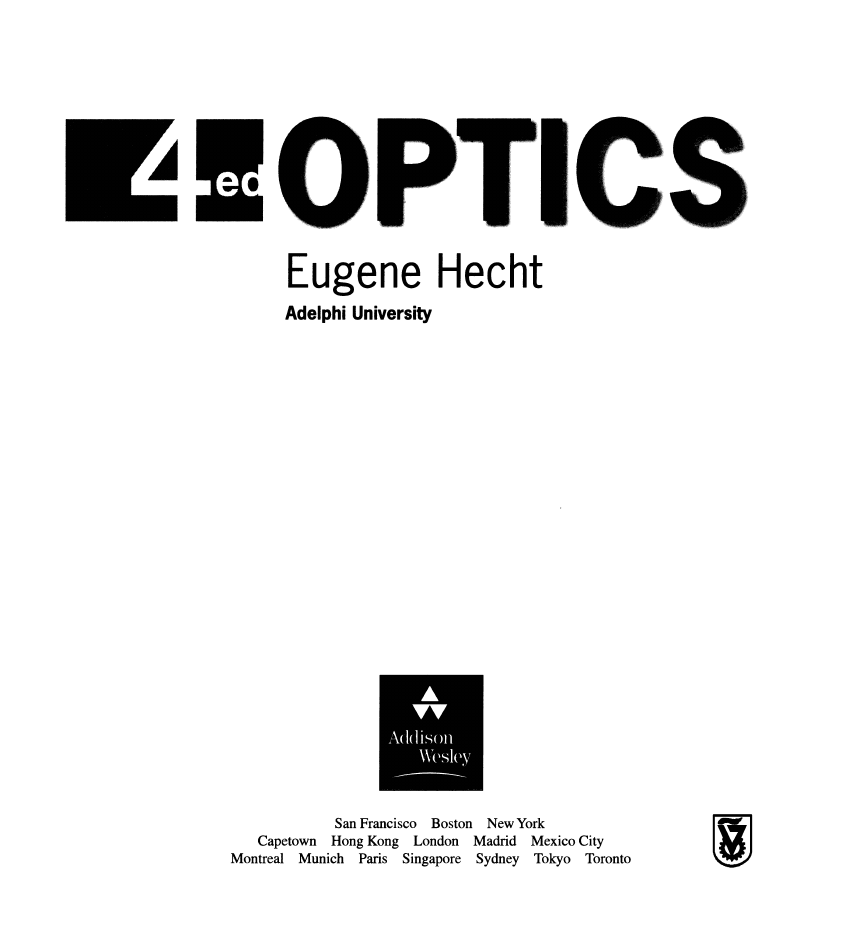
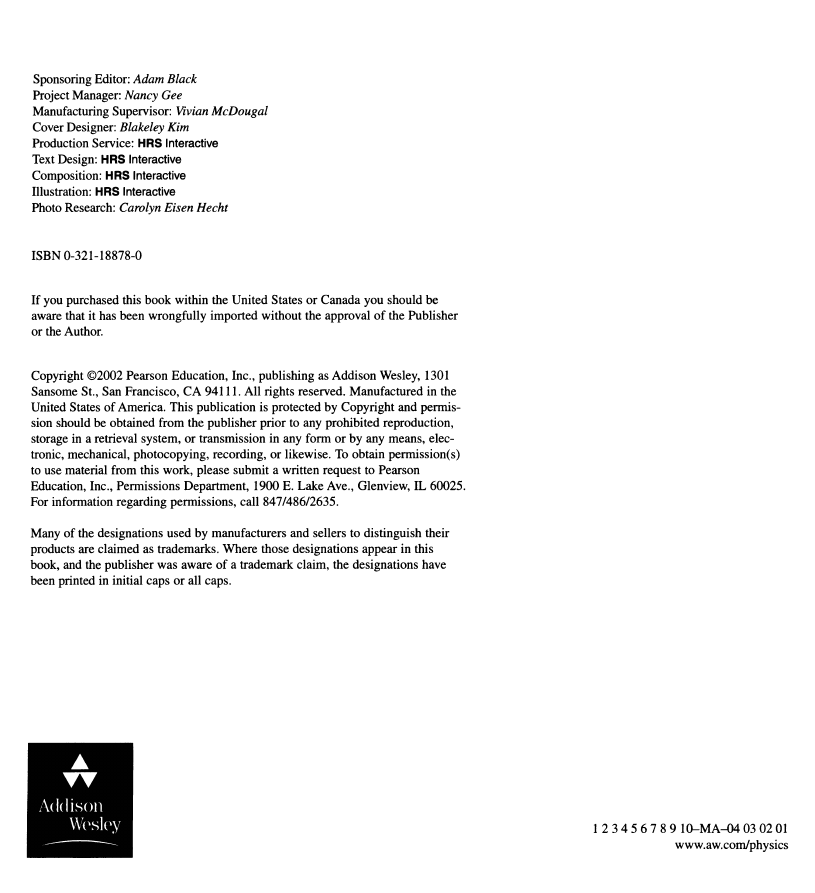
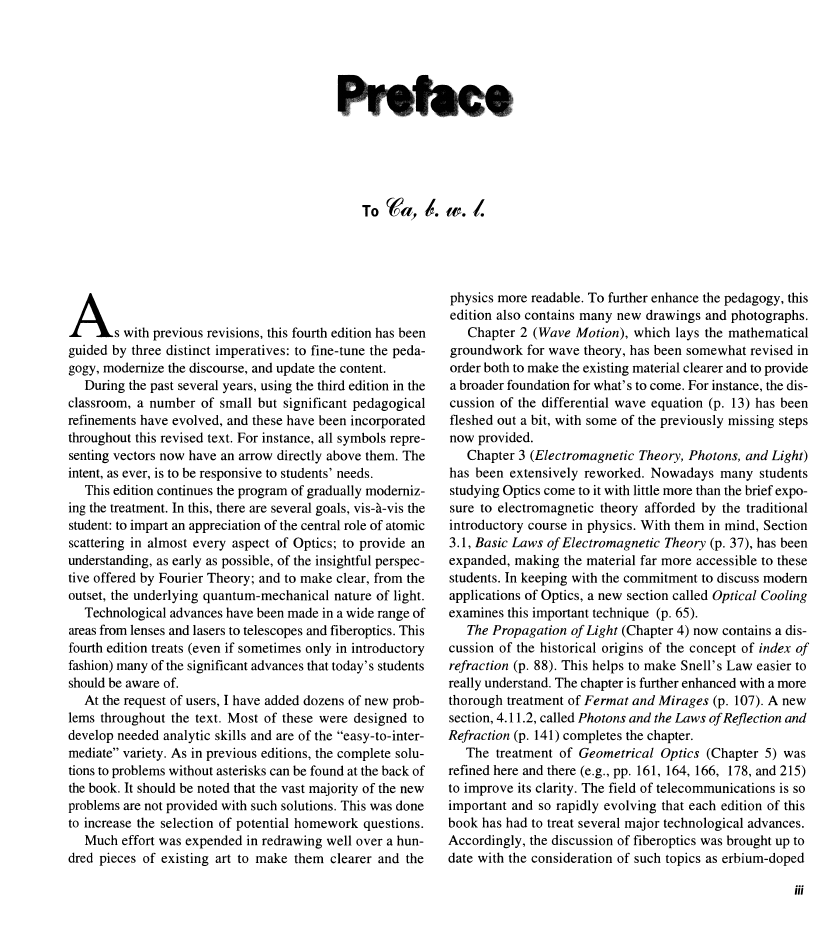
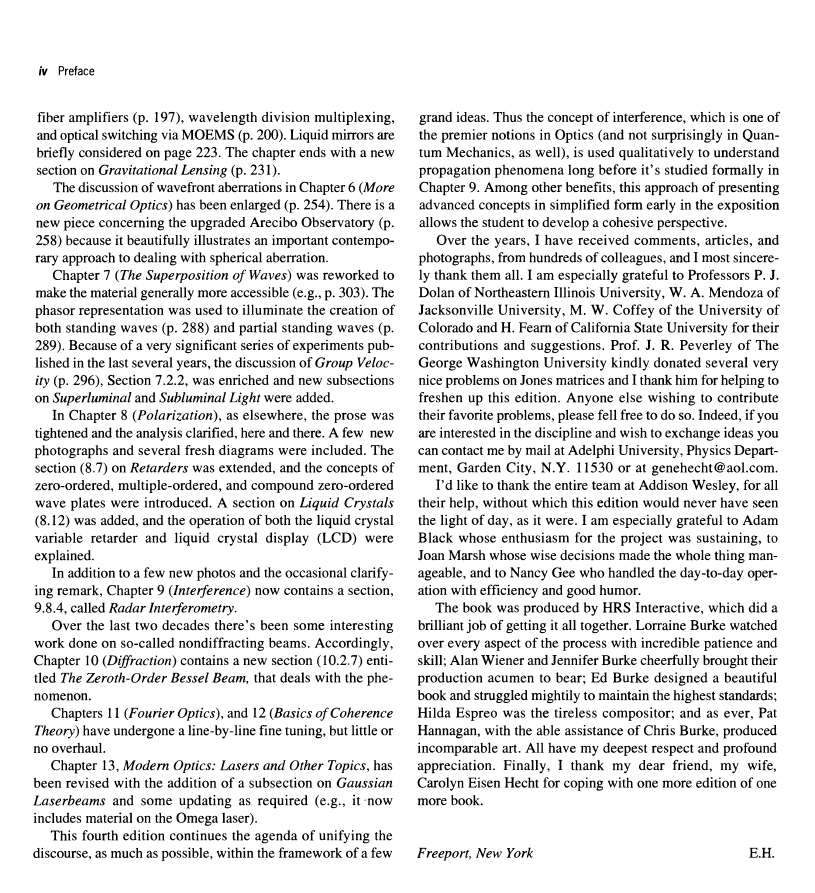
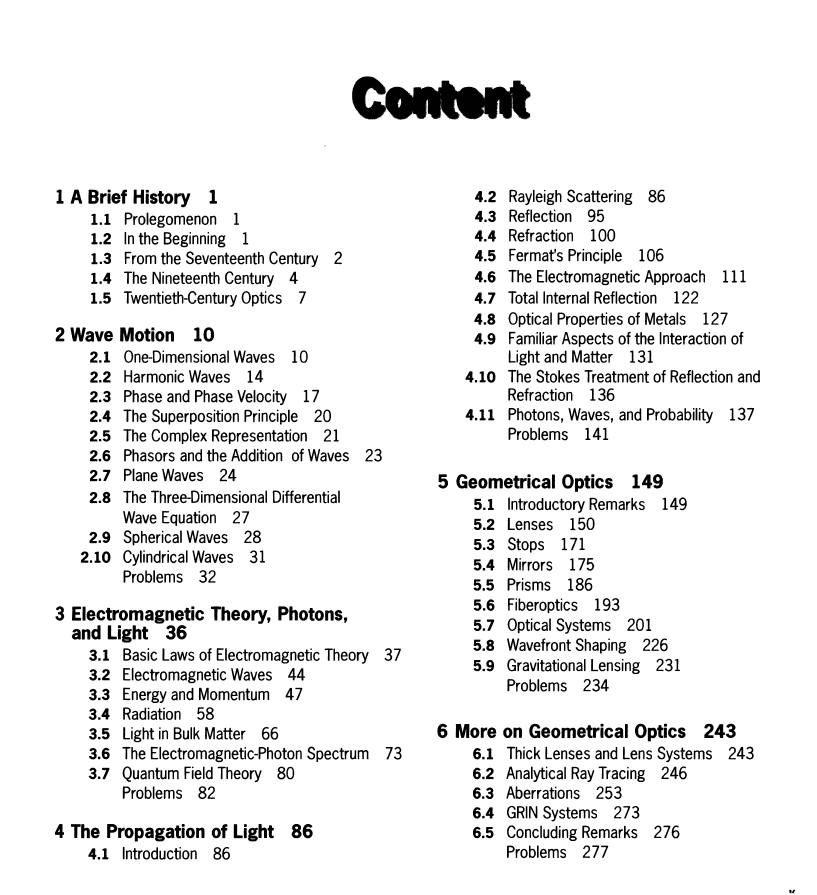
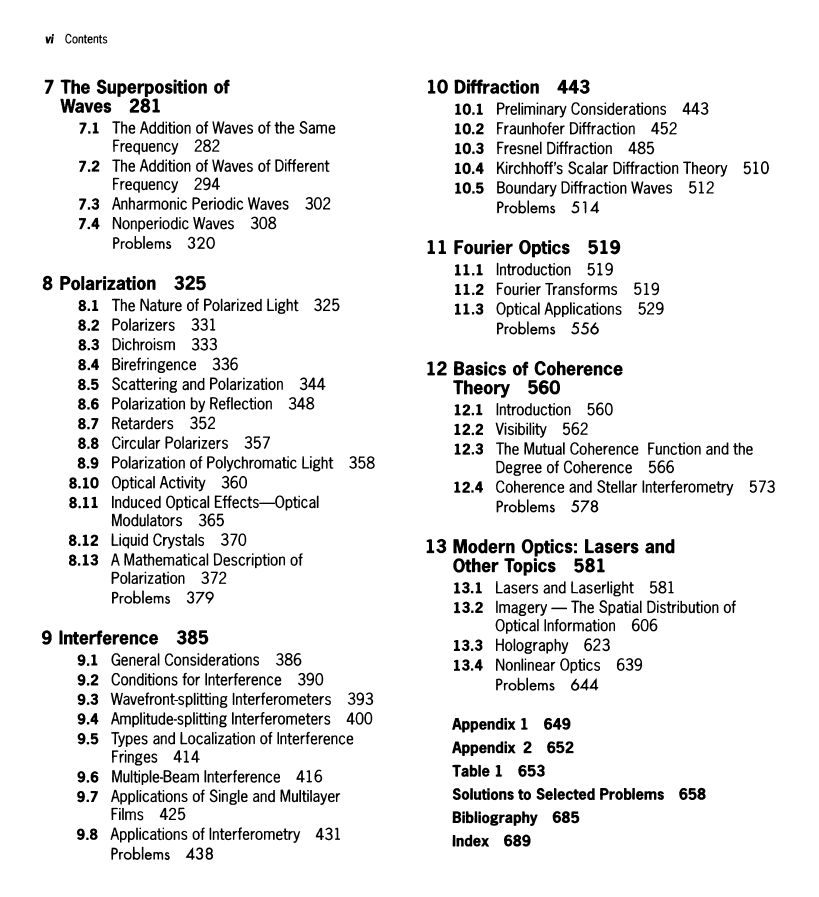
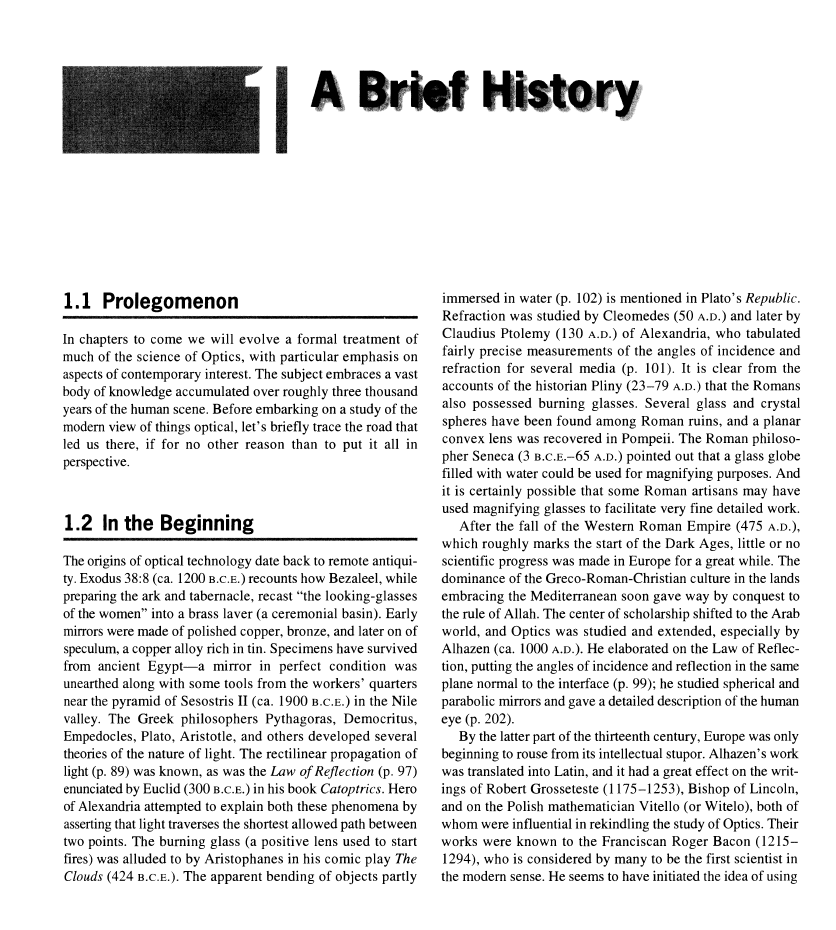








 2023年江西萍乡中考道德与法治真题及答案.doc
2023年江西萍乡中考道德与法治真题及答案.doc 2012年重庆南川中考生物真题及答案.doc
2012年重庆南川中考生物真题及答案.doc 2013年江西师范大学地理学综合及文艺理论基础考研真题.doc
2013年江西师范大学地理学综合及文艺理论基础考研真题.doc 2020年四川甘孜小升初语文真题及答案I卷.doc
2020年四川甘孜小升初语文真题及答案I卷.doc 2020年注册岩土工程师专业基础考试真题及答案.doc
2020年注册岩土工程师专业基础考试真题及答案.doc 2023-2024学年福建省厦门市九年级上学期数学月考试题及答案.doc
2023-2024学年福建省厦门市九年级上学期数学月考试题及答案.doc 2021-2022学年辽宁省沈阳市大东区九年级上学期语文期末试题及答案.doc
2021-2022学年辽宁省沈阳市大东区九年级上学期语文期末试题及答案.doc 2022-2023学年北京东城区初三第一学期物理期末试卷及答案.doc
2022-2023学年北京东城区初三第一学期物理期末试卷及答案.doc 2018上半年江西教师资格初中地理学科知识与教学能力真题及答案.doc
2018上半年江西教师资格初中地理学科知识与教学能力真题及答案.doc 2012年河北国家公务员申论考试真题及答案-省级.doc
2012年河北国家公务员申论考试真题及答案-省级.doc 2020-2021学年江苏省扬州市江都区邵樊片九年级上学期数学第一次质量检测试题及答案.doc
2020-2021学年江苏省扬州市江都区邵樊片九年级上学期数学第一次质量检测试题及答案.doc 2022下半年黑龙江教师资格证中学综合素质真题及答案.doc
2022下半年黑龙江教师资格证中学综合素质真题及答案.doc